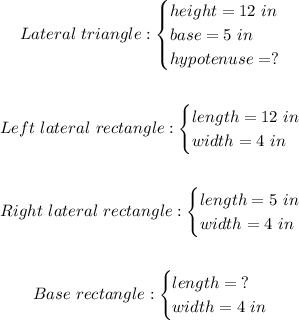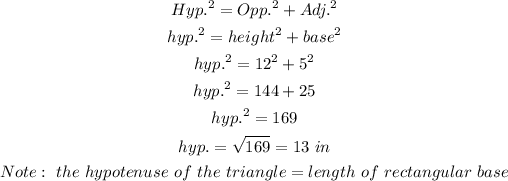Explanation
We are given the following:

We are required to determine the following:
• The missing length of the triangle.
,
• The lateral area.
,
• The single base area.
,
• The surface area of the figure.
We know that we can determine the missing length of the triangle by using the Pythagorean theorem as follows:

Hence, the missing length of the triangle (hypotenuse) is 13 in.
Next, we determine the lateral area as follows:

Hence, the lateral area is 128 in².
The area of the single base can be calculated as:

Hence, the single base area is 52 in².
Finally, the surface area of the figure is:

Hence, the surface area is 180 in².